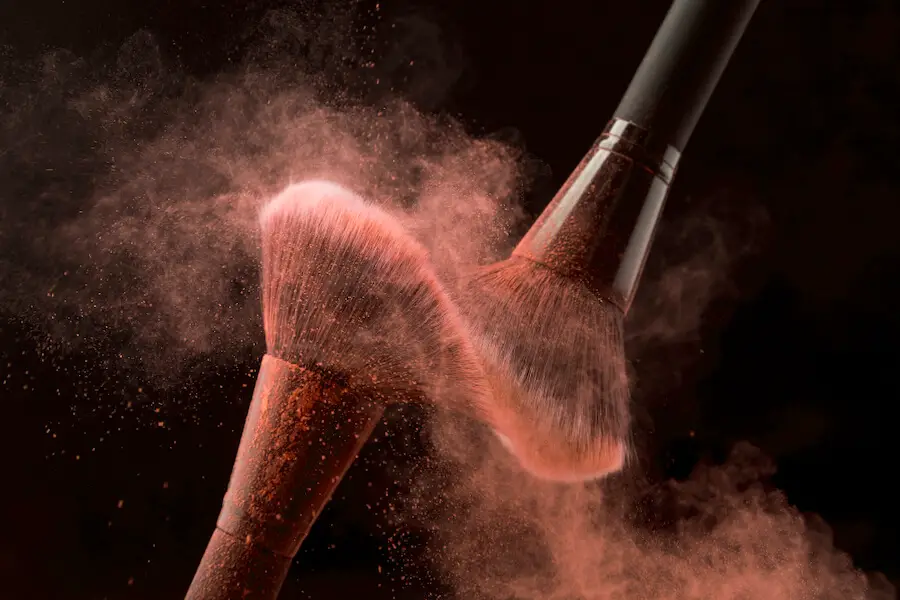Picture this. You’re walking down the cosmetics aisle. There, hidden behind a group of mineral concealers, you find it – the perfect foundation match for your skin.
Leaving the store, you arrive back home. Reaching for that trusty tube of foundation, you gently apply its contents onto your skin – only to discover an ashen face staring back at you in the mirror!
Now, the problem here isn’t your tube of foundation. Instead, it’s the wrong shade because you failed to choose one that suited your complexion type.
This Foundation Was the Perfect Shade! What Went Wrong?
There are tricks to finding your ideal shade – no matter the type of makeup you want to apply. And it starts by understanding how undertones in skin work.

If you’re like many women, you’ve probably made the mistake of buying a foundation, concealer, blush – even bronzing powder – that was a little bit off. It was too dull, too peachy, or too sallow.
In other words, finding the right shade of foundation isn’t always as easy as it should be. And it can be especially difficult if your skin tone has either cool or warm undertones.
Simply put , undertones in skin make a difference when choosing the right foundation shade.
What Are Undertones In Skin?
Basically, undertone is the hue your skin takes on due to the presence of either yellow (warm) or blue (cool) pigments. For instance, someone who has a yellow tone will look more sallow or jaundiced, while a person with a blue tone will have a more ashen appearance.
In other words, your skin properties influence the color of the foundation you choose – which is why it’s so important to know how to find your undertone. If you can’t do this accurately , then you may end up either looking too dark or too light.
So if your choice doesn’t also complement the underlying colors beneath your skin, you could have a problem.
Below the Surface: Undertones in Skin versus Surface Skin Pigment
You’ll be surprised to learn that color pigments present on your skin’s surface aren’t the same as those beneath it. In fact, the ones you see are a mix of yellow and blue tones that have been created by exposure to various types of sunlight.
This is why some people have a difficult time finding their perfect shade right out of the bottle.
Surface skin tone is the actual color of your skin. And guess what? It’s determined by melanin – the amount of natural melanin pigment in the epidermis (top) layer of skin.
And just like the golden leaves of fall, your surface skin tone changes with the seasons.
- Ever tried to get a tan? Your skin pigment might’ve darkened into a beautiful brown – or burned painful red until you either had to cover up or find shaded protection from the sun.
- What about winter? You might’ve noticed skin that was shades lighter – even pale – as you prepared your wardrobe for the cold months ahead.
Melanin is the reason behind that delightful tan you get every summer, darkening your skin with color as it shields sensitive areas from harmful ultraviolet rays. And since melanin doesn’t need to protect you as much during the cold winter months, your skin can appear significantly lighter.
But let’s dig deeper.
Undertones in Skin: They’re Behind the Veil
Skin undertones are the underlying colors beneath the surface, hidden in the deeper layers below the epidermis.
In a way, surface skin acts like a veil, blurring the underlying tints beneath the surface colors of your skin. And unlike surface skin tones, your skin’s undertones are forever constant – never changing despite the weather.
This means that there is a bigger chance of finding the perfect shade for you if you go one level deeper.
So if undertones in skin are hidden, how can we possibly know what they are?
Because undertones in skin aren’t invisible. In fact, you can determine your skin’s undertones by taking a peek at your wrist – and looking at the colors of your veins there.
So… surface skin on top, skin undertones underneath. Got it.
What’s Next?
When shopping for the best foundation shade, you’ll want to know what your skin’s undertones are and where you stand on the Fitzpatrick Scale.
So if you’re wondering how to find your perfect foundation shade, here are the two things that you need to do:
1. Determine Your Skin Undertones by Looking at Your Veins
2. Find Your Perfect Shade on the Fitzpatrick Scale – Depending on Where You Fall
It sounds easy enough, doesn’t it?
Equipped with knowledge about your skin type and skin’s undertones, you can purchase that foundation with confidence – and know exactly what your skin needs to stay healthy and smooth.

